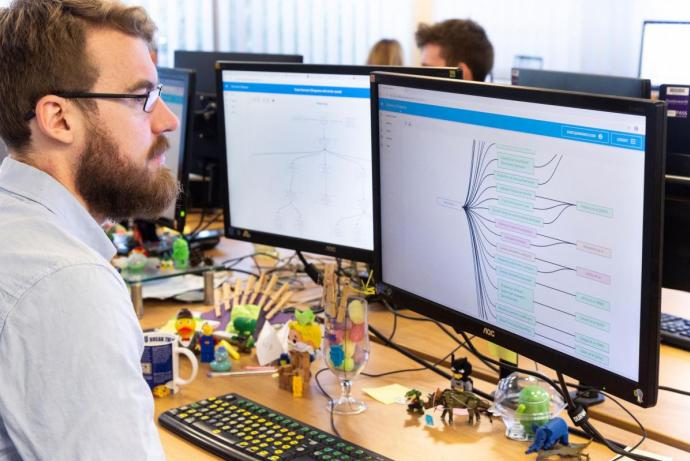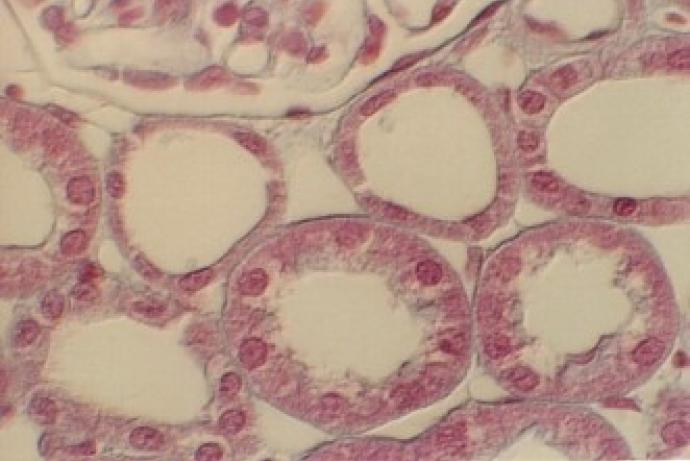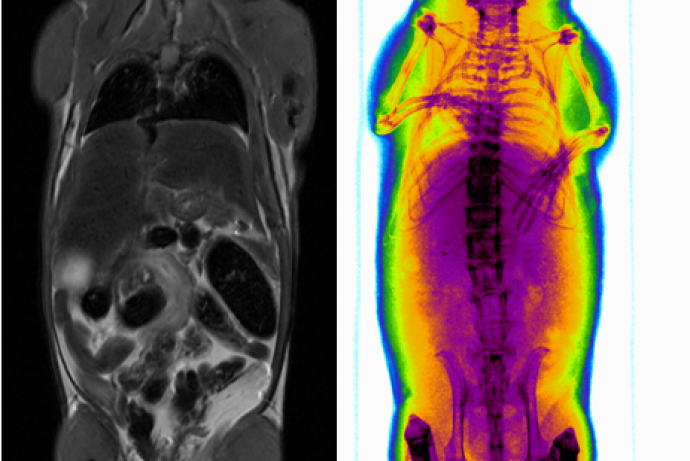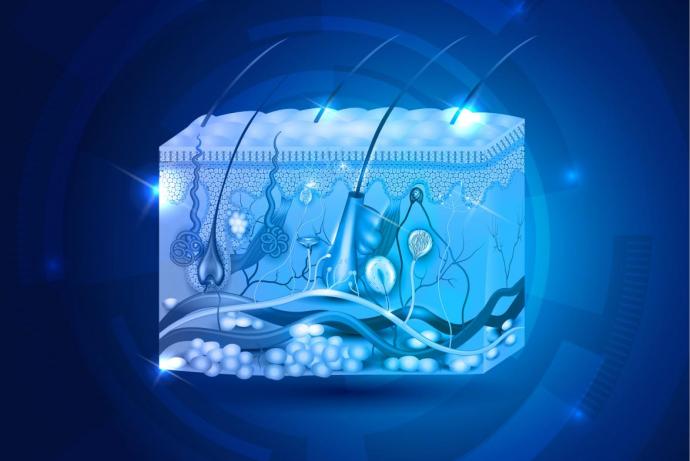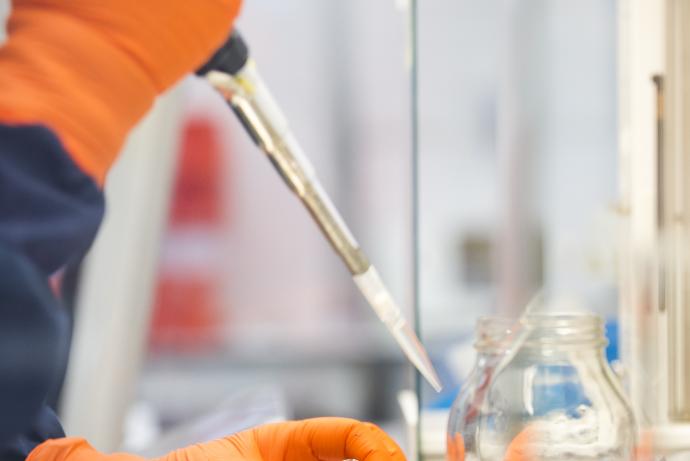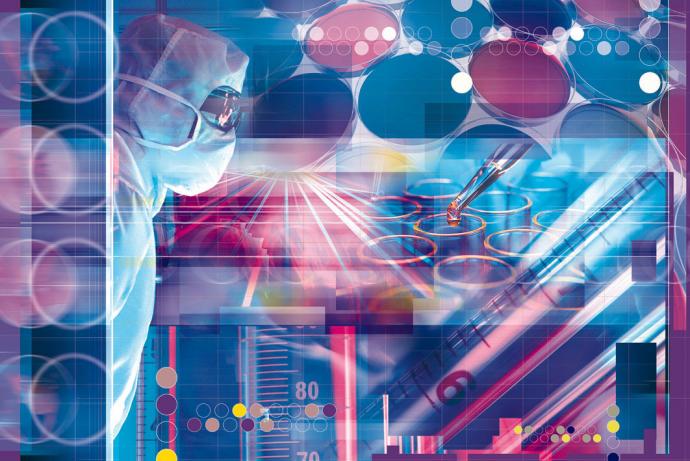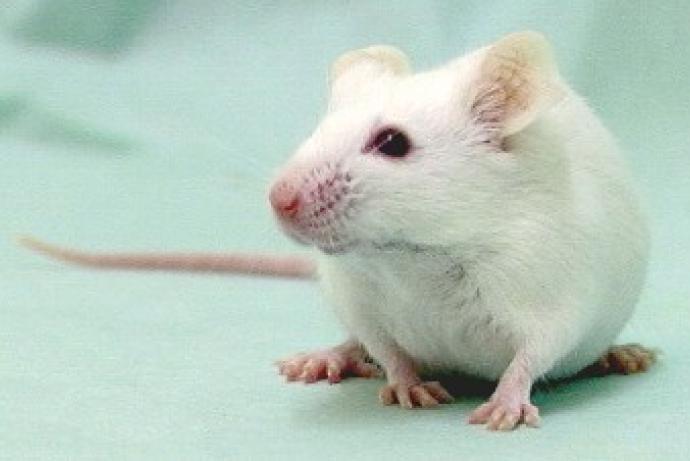Lein Applied Diagnostics is seeking partners to utilise a novel technology for making non-invasive pharmacokinetics (PK) measurements both in vivo and in vitro. This technology has been proven to be able to track pharmaceuticals in the anterior chamber of the eye and is now being extended to measure distribution through skin and through artificial constructs in vitro.
Through CRACK IT Solutions, Lein Applied Diagnistics partnered with the University of Oxford. With CRACK IT Solutions funding, this consortium developed and combined, a confocal measuring device and ultrasound-enhanced drug delivery system that is capable of providing sensitive, in situ, real-time diffusion tracking for characterising drug distribution in 3D tissue phantoms on therapeutically relevant time and length scales. This makes the use of more sophisticated non-animal models more viable, with the potential to replace some in vivo studies.
Current methods for PK measurements in vivo are invasive. For ophthalmology, there are no effective techniques to make non-invasive measurements of the diffusion of pharmaceutical drugs in the eye. As a result, it is necessary to physically remove fluid or material from the area of interest in order to evaluate the location and concentration of the compound under investigation. This requires the invasive use of a needle or other such device and can often result in the animals having to be euthanised (Bucolo et al., 2011). In addition, in order to assess the kinetics of the compound over time, it may be necessary to perform parallel tests on several animals at multiple time-points, with animals being euthanised at each time-point. As mice and rats are not recommended for ocular studies these trials tend to be performed on rabbits, beagles and non-human primates. Invasive approaches are also currently employed for the in vivo PK measurement of topically applied creams and drugs (Escobar-Chavez et al., 2008; Schnetz and Fartasch, 2001).
References
- Bucolo C, Melilli B, Piazza C, et al. (2011). Ocular pharmacokinetics profile of different indomethacin topical formulations. J. Ocul Pharmacol Ther 27(6): 571-6. doi:10.1089/jop.2011.0120.
- Escobar-Chavez JJ, Merino-Sanjuán V, López-Cervantes M, et al. (2008). The tape-stripping technique as a method for drug quantification in skin. J Pharm Pharm Sci 11(1): 104-130.
- Schnetz E and Fartasch M (2001). Microdialysis for the evaluation of penetration through the human skin barrier - a promising tool for future research? Eur J Pharm Sci 12(3): 165-174.
Lein Applied Diagnostics has developed a novel optical technique for making non-invasive measurements on many biological and industrial materials (Hearn et al., 2008). The technique combines confocal technology with fluorescence approaches to build up a map of the level of, and distribution of, a compound within simple tissue constructs and materials in areas such as ophthalmology, and tissue engineering.
Working with Durham University, Lein have successfully developed the technology as a proof of concept device that is able to accurately and reproducibly measure the level of, and distribution of, pharmaceuticals within the anterior chambers of excised porcine eyes with high spatial discrimination (Buttenschön et al. 2012).
One of the devices strengths is the speed of data collection that enables real-time tracking of the diffusion of the compound of interest. This work is now being built upon by extending the technology to make measurements to assess the motility of the compound/material of interest through the skin and on other test samples, for example tissue constructs in vitro.
The non-invasive nature of Lein’s technology offers significant advantages, both in vivo and in vitro, by enabling real time measurements without affecting the physical process. With minor adaptations the current technology may be used to measure a wide range of compounds of interest in diverse applications:
- In vitro assessment of the diffusion of pharmaceutical drugs, non-pharmaceutical chemicals and household and cosmetic products through eye and skin models to determine PK prior to animal studies.
- Non-invasive in vivo assessment of PK.
- Assessing the motility of fluorescently labelled tumoroids in vitro through biomimetic tissue constructs.
References
- Hearn, Taylor, Holley, et al. (2008). A novel confocal system to provide high precision noncontact measurements of optical media applied to the human eye. Biomedical Optics, OSA Technical Digest (CD), Optical Society of America.
- Buttenschön, Girkin, Daly (2012). Tracking ophthalmic drugs in the eye using confocal fluorescence microscopy. SPIE Proceedings Vol. 8214 Advanced Biomedical and Clinical Diagnostic Systems X, 821403 (22 February 2012); doi:10.1117/12.906135.
Lein has many years of experience in the development of optical instruments for the measurement of biological systems. However, Lein’s knowledge of industry (pharmaceutical, chemical and consumer product) requirements is limited, so they are seeking input from industry experts to make their devices viable for everyday use in these applications.
Collaborations are sought with companies who wish to have the means of assessing the in vitro and in vivo kinetics of their products and are keen to partner on the development of such measurement devices. Lein can provide the technical know-how; Lein require partners who have specific measurement needs who can guide them in ensuring that the device performs the measurements that are most needed, to the resolution required.
Information about IP
Lein has filed a total of nine patents to protect its novel confocal technology. Of these, seven have been granted and a further two are working their way through the approval process. These patents cover the measurement technique, the alignment to the item under test to ensure consistent results and the engineering that goes into making the device effective. The patents have been structured in such a way that they reinforce each other leading to a protective "patent thicket".
Early identification and removal of chemicals (pharmaceutical and non-pharmaceutical) with inappropriate PK from the development pathway will reduce the number of substances entering the subsequent cascade of studies in animals which are required before these substances can be used in humans, and so will substantially reduce animal use. The current device provides an enabling, in vitro screening platform to achieve this.
Where animal studies are required, the ability to assess diffusion characteristics longitudinally and non-invasively will reduce the overall number of animals required per study (each animal acts as its own control) and improve animal welfare. Reducing stress in the test animals will improve the reproducibility and quality of the data generated, thus maximising the volume of data that can be obtained from each animal and further reducing the number of animals required per study.
Overview | Impact | Publications
Overview
A major obstacle to successful cancer therapy is the need to achieve a therapeutically-relevant concentration of a drug or other agent throughout the volume of a tumour. Current drug delivery systems can only deliver therapeutically relevant doses of drugs to cells in close proximity to blood vessels. Drug delivery strategies to address this are currently the subject of intensive research and these include the use of combining targeted vectors with mechanical stimuli such as ultrasound.
Through CRACK IT Solutions, Lein Applied Diagnistics is working with the University of Oxford to combine its confocal microscopy technique with their ultrasound enhanced drug delivery system. With CRACK IT Solutions funding, this team aims to provide sensitive, in situ, real-time diffusion tracking for characterising drug distribution on therapeutically relevant time and length scales and across a broad range of drug types.
Understanding the fundamental mechanisms underlying different drug delivery strategies will enable refinement of treatment protocols in vitro, replacement of animals in preliminary testing by using materials that mimic real tissue and reduce the need for extensive in vivo studies. The technique will be of great academic value and offer considerable market opportunity for the company by meeting a significant demand in the pharmaceutical industry for reliable, early stage assessment of new products to improve the proportion progressing to phase 3 clinical trials (currently only ~5%).
Impact
Lein Applied Diagnostics and the University of Oxford have successfully developed in parallel, and subsequently combined, the confocal measuring device and ultrasound-enhanced drug delivery system. The integrated system is capable of in situ real-time measurement of ultrasound phantoms and has been used to evaluate the efficacy of various ultrasound enhanced protocols. Using an agarose gel-based ultrasound tissue phantom with a central pore (replicating a blood vessel) the company has been able to successfully demonstrate diffusion of the fluorescently labelled test compound from the central pore in to the surrounding phantom (replicating the tumour) in response to ultrasound being applied. Furthermore, this diffusion occurs in the direction of the ultrasound.
The development of the confocal instrument and the ultrasound system has provided a valuable alternative to current methods of measuring and optimising ultrasound enhanced drug delivery. Previously only end-point data was available for ultrasound experiments, as there was no instrument that could image ultrasound phantoms in situ. The instrument developed not only provides real-time in situ measurements, but is also free from sample processing artefacts.
There is growing interest in using this technology to collect previously unavailable, but extremely valuable, real time drug delivery data. Such data provides valuable insight into how ultrasound parameters and microbubble composition affect, for example, transdermal delivery of vaccines using ultrasound and microbubbles. It is anticipated that the use of the instrument will allow rapid iteration on ultrasound and microbubble combinations, resulting in more reliable delivery protocols. This translates into more refined and reliable animal experiments, which reduces the number of animals required.
Lastly, the capability of the instrument to measure drug distribution in situ allows the use of more sophisticated non-animal models, such as embedded human umbilical veins. Previously the use of such models was considered inefficient as it takes significant effort to prepare the model measurements after ultrasound exposure, and the preparation process degrades the quality of data. With the developed instrument however it is possible to measure the model in situ, thus making the use of complex models viable.
The NC3Rs CRACK IT Solutions project has enabled the company for the first time to develop and evaluate a meter that enhances their interests in the area of drug diffusion in the body. Prior to this work all their activities had been concentrated on the eye which is a much simpler medium due to its transparency. This project has moved them forwards to be able to make measurements through scattering media.
Building on these advances, the company has begun working with others on the 3D tracking of drugs and other materials through 3D tissue constructs. This work has also been very successful and the combined outputs of the two projects have reinforced their view that, strategically, the field of pharmacokinetics and in particular the area of real-time, non-invasive measurements, is one that will be key to them in the future.
To help support the continued development of this technology Lein is currently undertaking a funding round. Discussions are also being held with Oxford University about recruiting a new researcher to advance the project so that detailed measurement data can be obtained and analysed.
Publications and presentations
Bian S et al. (2017). A multimodal instrument for real-time in situ study of ultrasound and cavitation mediated drug delivery. Review of Scientific Instruments. In press. doi.org/10.1063/1.4978811.
This work was presented at a Google X event in November 2014 (this can be seen online on YouTube here) as part of Silicon Valley comes to the UK (SVC2UK).
